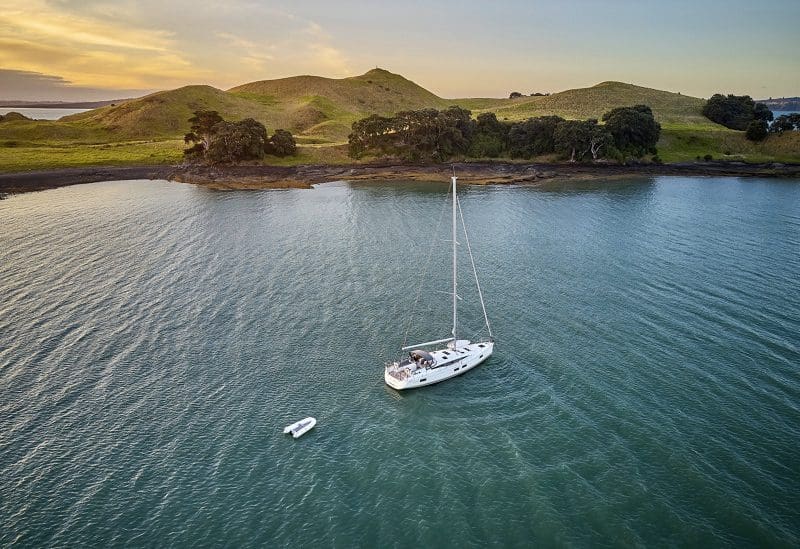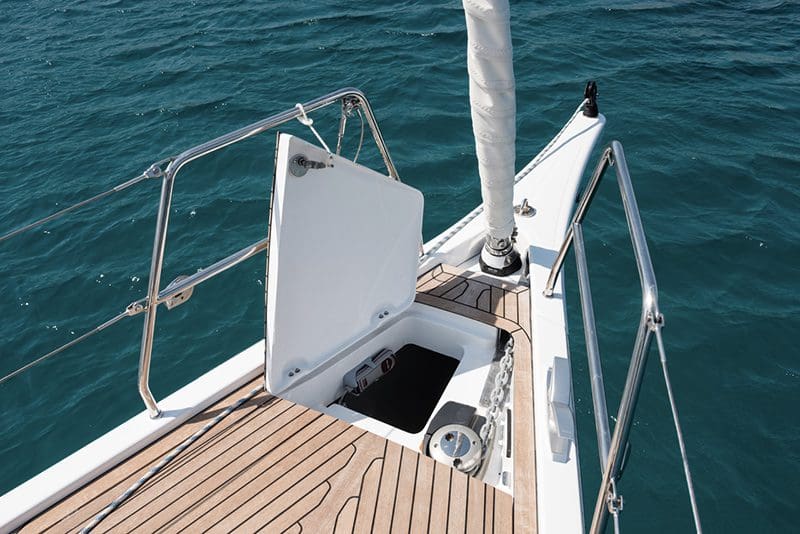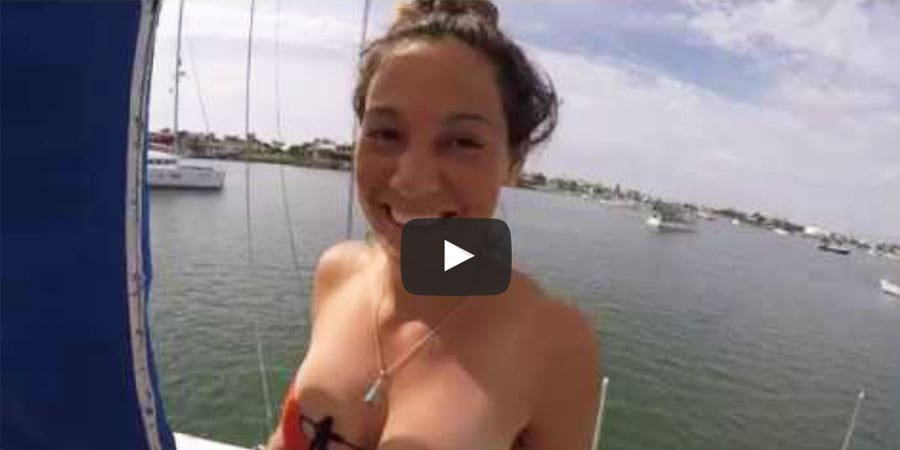
If you are anything like me, anchoring your sailboat in a quite, snug cove or harbor can be hard to beat. But how do you choose an anchoring spot that will provide you with a worry-free “night on the hook”? Follow these five easy tips to enjoy one of sailing’s most sought-after pleasures.
1. Check Your Ground Tackle for Integrity
Check your anchor ground tackle before you make your approach into an anchorage. This applies to quiet coves or crowded anchorages. Ground tackle consists of each part of your anchor, fastenings, rope, and chain that form an “umbilical cord” from your boat to the sea bottom. If one single part of your ground tackle fails, this could put your boat and sailing crew in danger. You could drag anchor and end up aground.
Take the time now to check for chafe (wear and tear), broken fittings, and bent or distorted anchor parts. Pay close attention to the anchor shank (long arm of the anchor attached to your rope or chain). This vulnerable anchor part needs to be straight without distortion. If bent, do not attempt to straighten the shank. This will weaken it–much like bending a paperclip back and forth. Use another anchor for peace of mind.

2. Choose Protection from Wind and Waves
What direction are the winds from right now? Are those winds expected to shift in a new direction over the next 24-48 hours? Answer these two vital questions before you select an anchorage. Next, look at your nautical chart and find a cove or indentation with protection from wind and waves on at least two sides. Protection on three sides gives you the best security.
For example, let’s say the wind blows from the north. You listen to the predicted forecast and winds are expected to shift to the northeast overnight. Choose an anchorage with protection from the north and east, or protection from the west, north and east. That way, your small sailboat will be protected from the present wind and waves (from the north), and the future, predicted wind and waves (from the northeast).
3. Know Your Seabed Bottom Material
Scan the chart inside the cove you have chosen. You need to have bottom material that your anchor can get a bite into. Sand, hard mud, and clay are ideal to drop your hook. Anchors tend to bury deep into these types of seabed materials. On the other hand, rock, grass, or kelp will be quite difficult for most any anchor to bite into. Your anchor might bounce over a rock-hard bottom or slide over slippery seabeds. Take the time to choose an “anchor friendly” seabed and you will sleep better at night.

4. Select the Best Anchor for the Sea Bottom
Carry at least two anchors aboard your boat. Purchase original anchors–not knock-offs. Copy-cat anchors can be of questionable build quality–unable to take the shear loads experienced when anchored. Choose an anchor that works well in good bottoms and one that you can trust in poorer bottoms. For softer seabeds like soft mud or soft sand pick an anchor like the Fortress. For other bottoms, use a well-proven boat anchor like the Rocna.
Cruising sailboats often carry three or more anchors so that they can use multiple anchors in stormy weather. Remember this–your anchor becomes your #1 primary insurance policy underway–not a piece of paper from a marine insurance company! Spend the money for superior anchor gear and you will be rewarded with confidence, peace-of-mind, and worry-free cruising anywhere in the world.
If you are anything like me, anchoring your sailboat in a quite, snug cove or harbor can be hard to beat.
5. Allow for Swing Room and Scope
Survey the anchorage area once you arrive. Make a few loops around the anchorage spot. Look at how other boats are anchored. Follow suite. If other boats have two anchors out, so should you. Favor that side of the anchorage nearer boats with designs close to your boat. Boats of like-designs swing at anchor in similar fashion.
Remember that your anchor marks the center of the circle and you will swing around the anchor in a circle–called a “swing circle”. Estimate the swing-circle of other boats. When you drop anchor, make sure that your swing circle does not intersect the swing-circle of another boat. Keep well clear of shoals (shallow water) or land downwind of your chosen anchor spot. Calculate the amount of anchor rode you need for safety. Allow 7 feet of rode for each foot of water depth–called “scope”. Add expected height of tidal rise and the distance of your bow above water in your calculations.
For example, let’s say you arrive at your anchorage and you will anchor in 10 feet of water. The tide tables say the tide will rise another 5 feet. Your bow is 3 feet above the water. How much scope do you need? Add everything and multiply by 7. 10 feet + 5 feet + 3 feet = 18 feet x 7 = 126 feet. Put out 126 feet of anchor rode for safe anchoring.
Follow these five tips for anchoring your sailboat safe and sound in any anchorage. This will give you confidence and peace-of-mind–wherever in the world you choose to cruise!
Captain John shows you the sailing skills you need for safe sailing anywhere in the world. Sign up for a FREE issue of the highly popular “Captain John’s Sailing Tips” newsletter and learn how you can get instant access to over 425 sailing articles, sailing videos, newsletters and more at SkipperTips.




